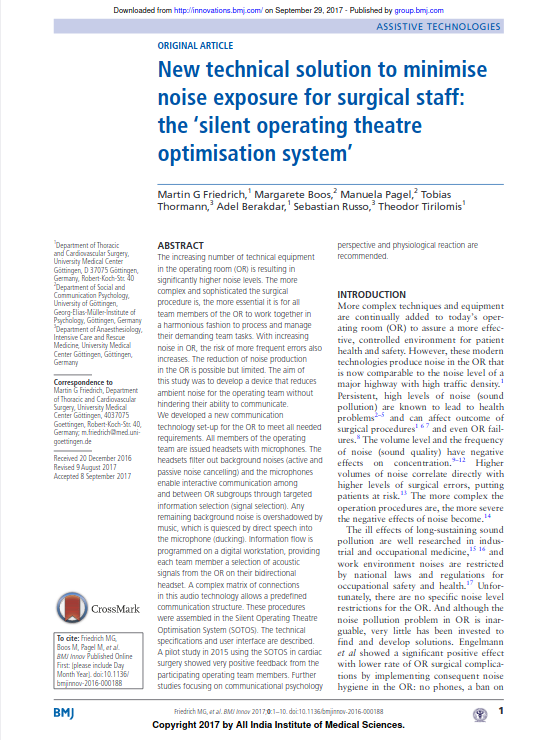New technical solution to minimise noise exposure for surgical staff: the ‘silent operating theatre optimisation system
The increasing number of technical equipment in the operating room (OR) is resulting in significantly higher noise levels. The more complex and sophisticated the surgical procedure is, the more essential it is for all team members of the OR to work together in a harmonious fashion to process and manage their demanding team tasks. With increasing noise in OR, the risk of more frequent errors also increases. The reduction of noise production in the OR is possible but limited. The aim of this study was to develop a device that reduces ambient noise for the operating team without hindering their ability to communicate. We developed a new communication technology set-up for the OR to meet all needed requirements. All members of the operating team are issued headsets with microphones. The headsets filter out background noises (active and passive noise cancelling) and the microphones enable interactive communication among and between OR subgroups through targeted information selection (signal selection). Any remaining background noise is overshadowed by music, which is quiesced by direct speech into the microphone (ducking). Information flow is programmed on a digital workstation, providing each team member a selection of acoustic signals from the OR on their bidirectional headset. A complex matrix of connections in this audio technology allows a predefined communication structure. These procedures were assembled in the Silent Operating Theatre Optimisation System (SOTOS). The technical specifications and user interface are described. A pilot study in 2015 using the SOTOS in cardiac surgery showed very positive feedback from the participating operating team members. Further studies focusing on communicational psychology perspective and physiological reaction are recommended.
File: Type PDF / Size: 4 MB/ Download

